Updating Oskari version
Note! We are updating the frontend and server versions at the same time and for best compatibility it's best to use same version in both. Hotfix/patch versions might not always match but with version major.minor.patch the major and minor versions should match.
Migration and release notes
Simply updating the version of Oskari dependency for the frontend and server and building new versions of your app/server is enough in most cases. But sometimes there are additional things that need to be done when updating. For example your application code might not compile after updating if we have changed some class in oskari-server that you are using directly in your app or there might be some things that should be done while updating that are not as obvious. These things are documented on the Migration Guide in oskari-server repository. You should also at least skim through the Release notes for both server and frontend to see if there are something that might affect your app. There might be a new implementation of a functionality/bundle that you want to use instead of the old one or things like this.
So take a look at these before updating:
It's also a good idea to see any PRs/changes for the sample application to see if there are things that you can streamline/change in your application for the newer version:
- https://github.com/oskariorg/sample-application
- https://github.com/oskariorg/sample-server-extension
Note! The idea is not that you use the sample-application/server directly but use it as a template to create your own app/server. For example the database migrations in server-template assume they are run on an empty database and might not work properly if copied directly to your server code. We change the sample migrations between versions to make the most sense as simple examples for the latest version while actual apps (copies of sample-server) should work to migrate the existing database of the app.
Server
Updating an Oskari-powered server that is based on the sample-server-extension template is done by updating the value of oskari.version property in pom.xml file:
<properties>
<oskari.version>1.55.1</oskari.version>
...
</properties>
To the new version:
<properties>
<oskari.version>1.56.0</oskari.version>
...
</properties>
After this run mvn clean install to generate a new oskari-map.war under [your-server-repository-root]/webapp-map/target. Replace the oskari-map.war under the oskari-server/webapps folder (in a setup similar to the Oskari/Jetty download package) with the new one.
Frontend
Updating an Oskari application that is based on the sample-application template is fairly simple as well. For the frontend the oskari-frontend (and possible oskari-frontend-contrib) dependency is updated by changing the version number in package.json file from the current version in the app:
"dependencies": {
"oskari-frontend": "https://git@github.com/oskariorg/oskari-frontend.git#1.55.2"
},
To the new version:
"dependencies": {
"oskari-frontend": "https://git@github.com/oskariorg/oskari-frontend.git#1.56.0"
},
When updating Oskari version you might also want to change the application version in package.json on your application to signal that the application has been updated.
After this you need to run npm install to install any new/changed libraries and npm run build to generate a new build under [your-application-repository-root]/dist/[version on package.json]. After the build the application repository can be served as static resources from Jetty/nginx or similar server.
Note! To use the newly built frontend you will need to update oskari-ext.properties under oskari-server/resources to link the new frontend version:
oskari.client.version=dist/[version from your package.json]
Building the frontend for production
Modern web applications are developed using JavaScript syntax that is not fully supported by older browsers and the code needs to be processed before it can be used by end-user browsers. This step also includes bundling and minifying the code so it's more compact for consumption than the human-friendly version that is used for development. This will reduce the startup time for the end-user dramatically.
With the default sample application (a pre-built version is included in the zip download) you can run npm run build to generate the minified Javascript files. This will result in folders and files generated under [your frontend repository root]/dist/.
The build works by reading a main.js file that links all the functionality/bundles you want to use in your application together and should match the appsetup (bundle collection) used on the website you are creating including any dynamic (role-based) bundles that are added on the fly. So basically all the bundles you want to use in that application. Here's an example for the basic geoportal appsetup and for an embedded map. These are processed when running npm run build.
If you take a look at the package.json script for build you can see that the parameter --env.appdef=applications is used to point the build to search for application main.js files under the applications folder. You can change this in your own app as you wish.
The best point to start customizing your app is changing the main.js file under the sample geoportal application to only include the bundles that you are using. This reduces the amount of code the end-user needs to load. You can also safely remove the 3D applications if you don't need them. The application for embedded/published maps usually stays more or less the same and the geoportal one is usually customized based on requirements.
When changing main.js to include application specific bundles and/or customizing the application you need to run npm run build again to create new minified result. You will also need to do this when updating the new version of Oskari or after changing any application specific code/bundles you want to use.
Developing the application specific code
While developing your application it's recommended to run npm run start instead of npm run build over and over again. The start script launches a Webpack dev-server for the frontend that will process the code while you develop it. The dev-server starts at port 8081 and assumes the normal backend/server is running on the default port 8080 (The oskari-server based server component). The dev-server also assumes that the client version on the server is configured in oskari-ext.properties under oskari-server/resources as:
oskari.client.version=dist/devapp
Last modified: Mon Jun 24 2024 15:11:03 GMT+0300 (Eastern European Summer Time)
